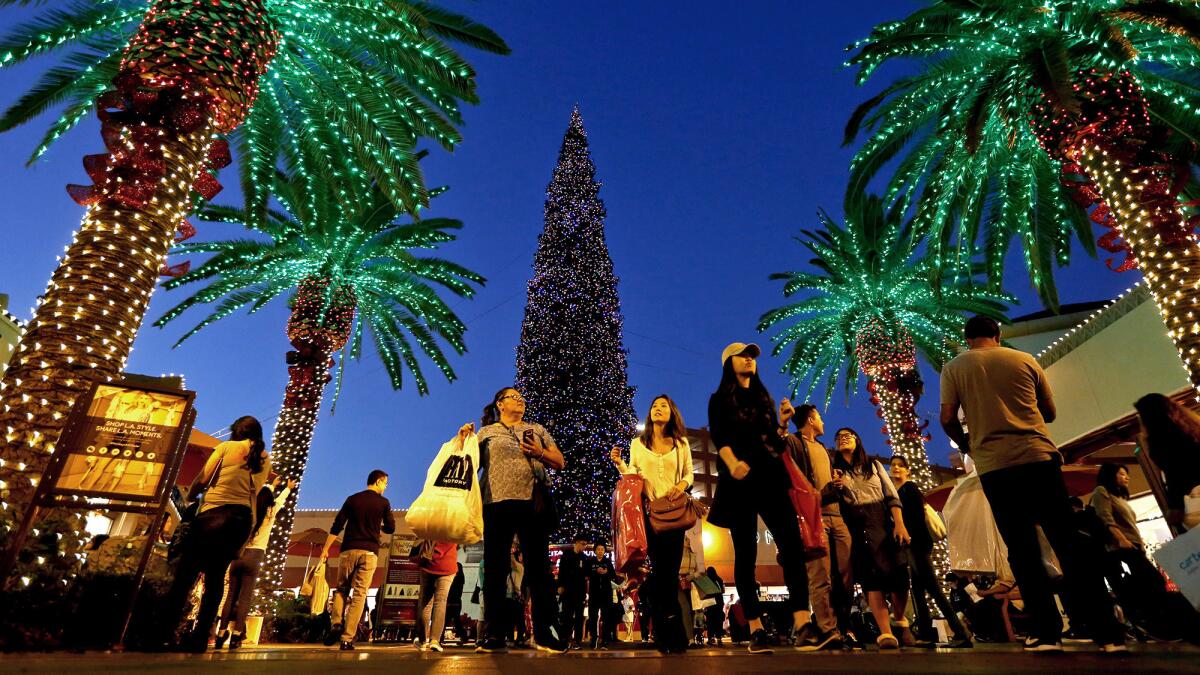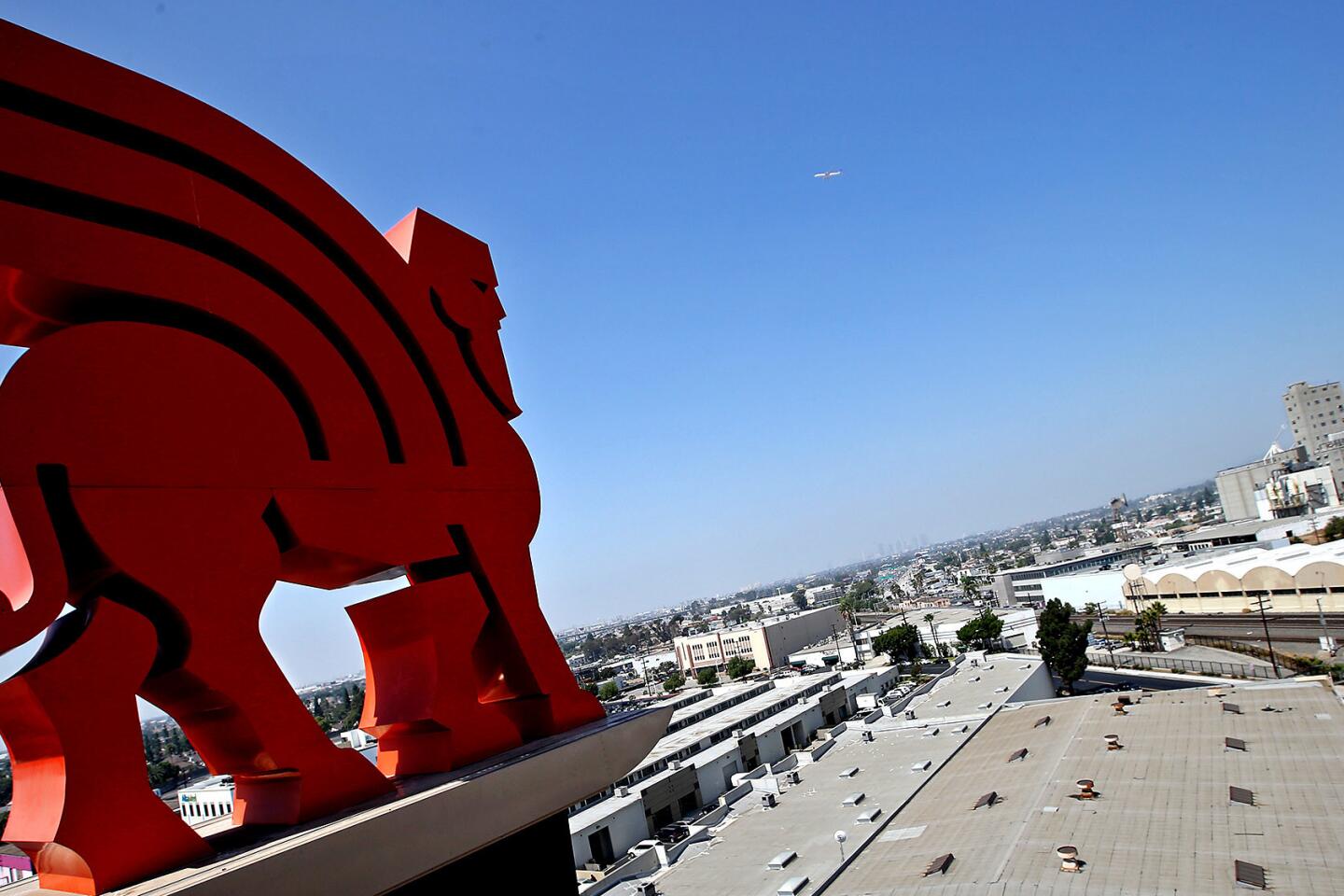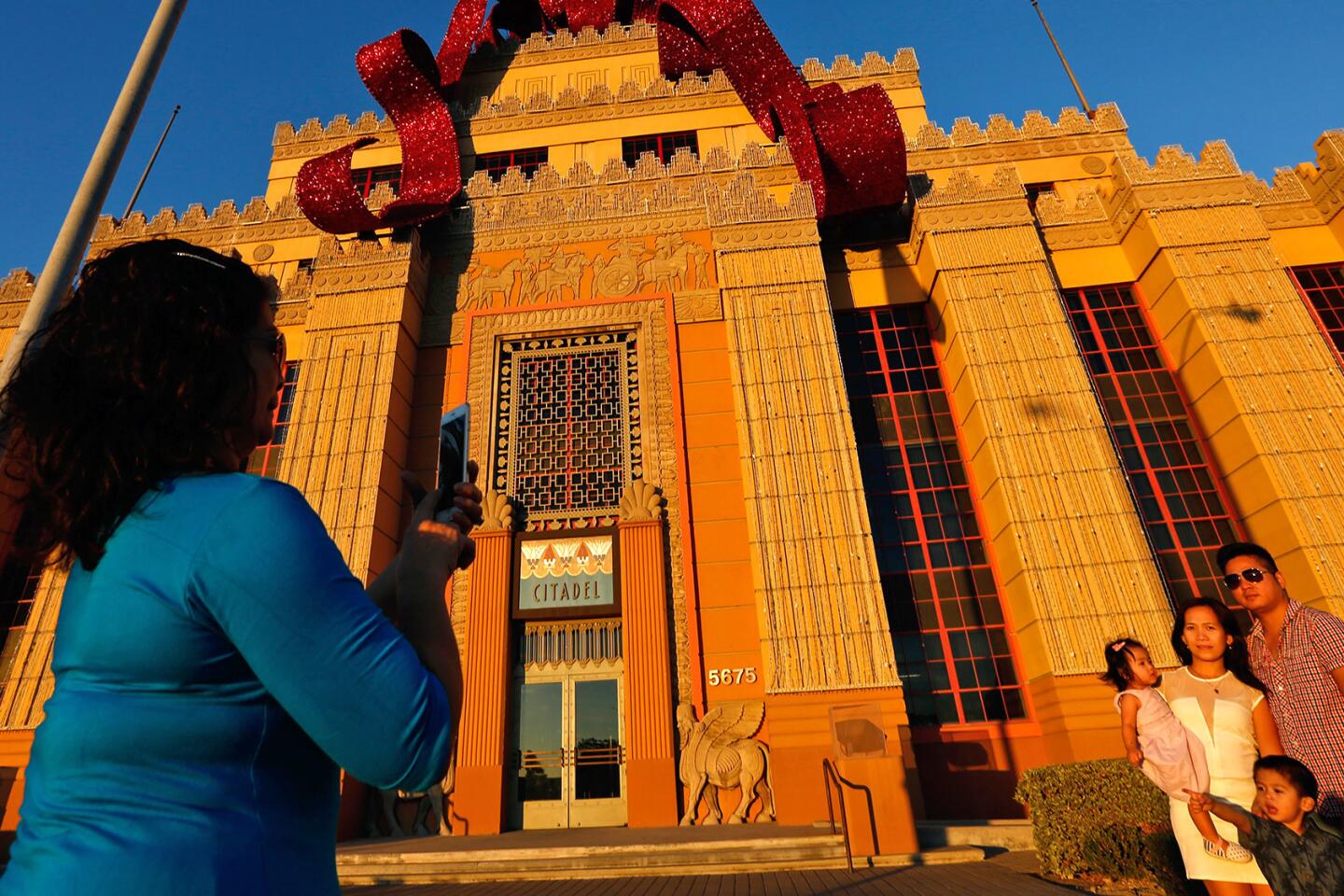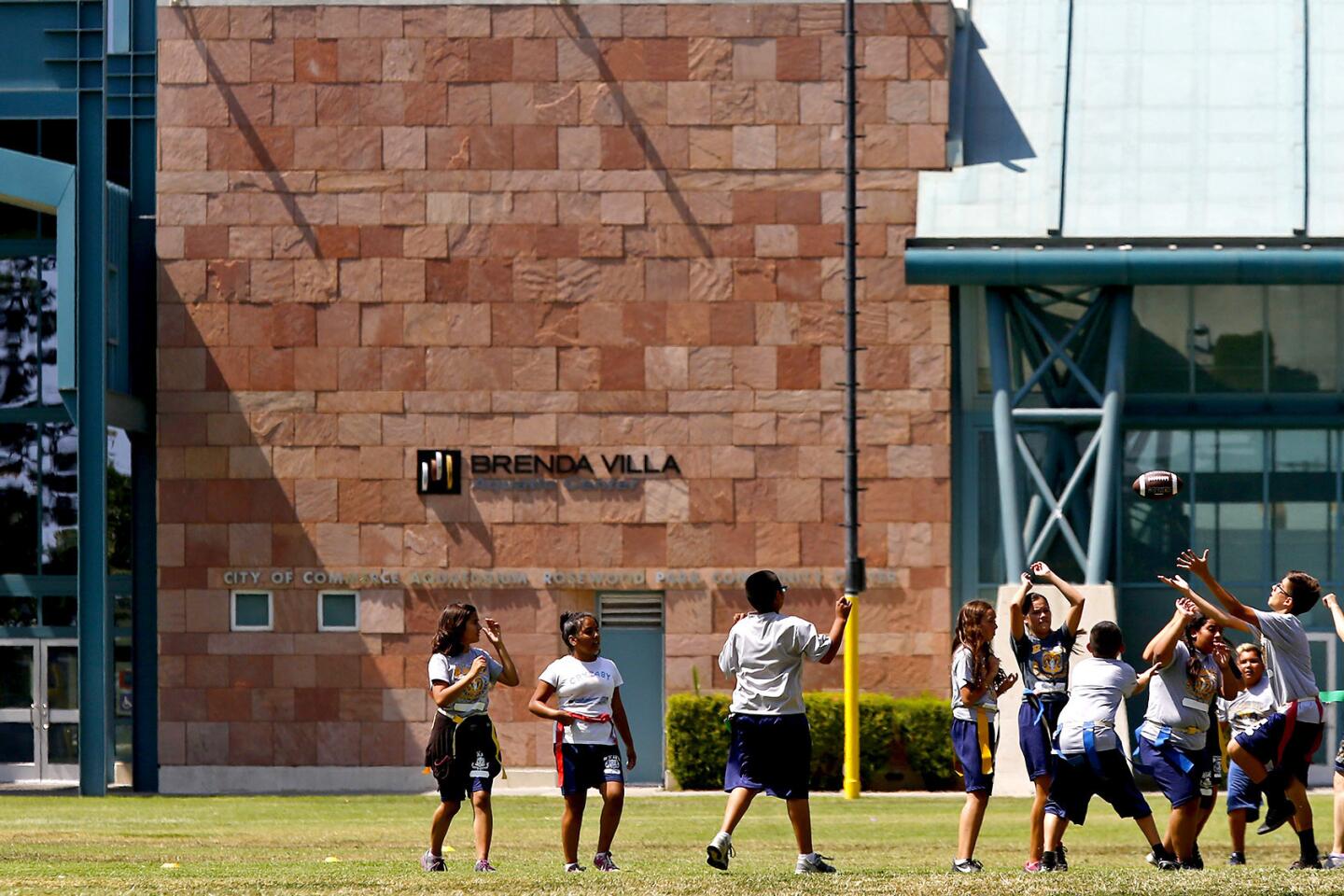Neighborhood Spotlight: Commerce is a factory town that stays true to its name
The discovery of oil in the 1890s, followed by Henry Ford’s decision to open an auto plant in the Los Angeles area in 1914, kicked off Southern California’s rapid ascent as a major manufacturing hub.
Cars, tires and petroleum products of every type were just the beginning. Many of the goods that came to define modernity in the 20th century were produced in and around L.A., including the airplanes that helped win a world war and the rockets that would, for a time, make America the world’s greatest space-faring nation.
Much of this manufacturing, and especially the production of cars and tires, was focused in the Central Manufacturing District, a vast megaplex of warehouses and factories on the banks of the L.A. River to the south and east of the city.
There, goods rolled off assembly lines and were loaded onto trains bound for domestic markets to the east and north, and to the twin ports of Long Beach and Los Angeles for shipping to consumers around the world.
By the 1960s, business interests in the unincorporated areas of the CMD began to turn a leery eye toward L.A. which, along with other surrounding cities, had begun to make plans to annex the manufacturing districts to expand their tax bases.
To avoid that fate, the residents and business owners of an area surrounding a key rail yard and a bustling Chrysler plant, taking a page from the recently established City of Industry, voted to incorporate as the independent city of Commerce.
From the perspective of the citizens of the new burg, the benefits of this move were twofold. First, zoning decisions would be made locally, ensuring that nosy big-city bureaucrats concerned about the effects of pollution were prevented from imposing onerous restrictions.
Second, the new city got to set its own tax rates and keep the proceeds within the city limits. That became a huge benefit for the residents of Commerce. The city used its largesse to build a massive swimming complex, to assist the elderly by providing a rent stipend and even to establish a residents-only resort near Lake Arrowhead.
As L.A. began to deindustrialize in the 1970s, Commerce was able to successfully navigate the transition from tire-manufacturing center to a more diverse economic base. One of the city’s defunct tire factories, the Assyrian-themed Sampson Tire Co., was transformed into a thriving outlet mall, and a casino and hotel provided another steady income stream.

Neighborhood highlights
Affordable homes: With most listings under $300,000, Commerce is one of SoCal’s easiest close-in markets to crack.
Shop ’til you drop: The outlet mall and its historic facade are a popular shopping destination for locals and visitors from around the world.
Know when to hold ’em: Poker aficionados can hone their bluffing skills at the city’s casino, which hosts popular pro tournaments throughout the year.
Neighborhood challenges
A factory town: Living in Commerce means dealing with the noise and pollution that come with manufacturing, and constant train and truck traffic.
Expert insight
Luther Sanchez, a real estate agent with Century 21 All-stars in Pico Rivera, grew up in Commerce and has a number of listings in the area.
“People in Commerce are very welcoming people, which is not common in a lot of places in Southern California,” Sanchez said. “Relationships are formed because of the events and resources the city provides.”
Sanchez said the community is made up of millennials who recently moved into the area and residents who have lived in Commerce for generations, creating “a very diverse community.”
Besides an area called the Village that has newer, remodeled homes, Commerce is made up mostly of small bungalow-style homes, he said.
Market snapshot
In the 90040 ZIP Code, based on five sales, the median sales price for single-family homes in May was $428,000, according to CoreLogic. That was a 18.8% decrease in median price year over year.
Report card
Within the boundaries of Commerce are Bandini Elementary and Rosewood Park, which scored 779 and 724, respectively, in the 2013 Academic Performance Index.
Nearby schools include Suva Intermediate, which scored 738, and Montebello Intermediate, which had a score of 726. James A. Garfield Senior High had a score of 714, and Bell Gardens High scored 704.

MORE FROM HOT PROPERTY
New Venice tri-level is all-in on flexible living space
Attorney Larry H. Parker seeks a good settlement for San Juan Capistrano estate
Lyricist Bernie Taupin offers up his prized equestrian estate in Santa Ynez Valley
More to Read
Sign up for Essential California
The most important California stories and recommendations in your inbox every morning.
You may occasionally receive promotional content from the Los Angeles Times.












